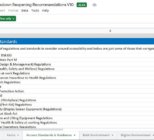There are more than 700,000 autistic people in the UK but many struggle to find venues and attractions that understand their needs.
There are however some very simple steps you can take in making your venue more accessible to autistic people and their families.
Customer service
Autism affects how people communicate and interact with the world. Autistic people interpret differently both verbal and non-verbal language, such as gestures or tone of voice. Consider supporting your customer facing staff to undertake some autism awareness training so that they can understand their autistic customers better and feel confident in how they support them if they require help during a visit. Establishing Autism champions within the staff team will also enable greater support to fellow staff.
Ensure that those staff members who have had autism training and are aware of what reasonable adjustments are in place are easy to identify to visitors so that they can seek help from them should the need it.
Preparatory information
By providing as much information as possible about your venue, you will manage expectations, reduce anxiety and help with planning. Details of a venue layout are important for people with a range of accessibility requirements, but certain environmental elements – noise, lighting, big crowds – can be challenging or confusing for an autistic visitor.
Ensure your websites are easy to navigate and provide things such as
- photos or virtual tours of both the venue and exhibitions
- advice on busy and quiet time to attend
- information about the reasonable adjustments you are able to accommodate
- how to contact the venue if they need to request any reasonable adjustments or if they have any questions
Try not to overload each page or section with too much information and lay it out clearly, breaking down large sections.
Visit information
Clear navigational information
- You can help an autistic person navigate an environment by providing clear visual information – maps, signage, directions etc, taking care to ensure language used is simple, to the point and clear.
- Navigating large spaces can be difficult, but knowing where the toilets are, how to get to an exit, where quiet spaces are and which staff members are on hand can help autistic people to manage anxieties. If there is a process someone will need to go through, break it down into small chunks with a clear outline of what support is available at each stage.
- Have clear signage in prominent locations throughout a building that indicates the direction of key places or where you are.
- Providing a map at the entrance or one that someone can access before a visit (online) and take with them can help. Make sure to also include information about who to ask for help if needed.
Processing information
- Asking autistic people about their preferences for communication and offering options (where possible) is good practice – for example, asking whether the individual would prefer to communicate verbally or in a written format.
- Sometimes autistic people feel like they’re getting ‘too much information’ and need a few moments to filter through it all. This is called processing time. If you’re talking to someone, give them a minute. Even when information is available and accessible, it may still take autistic people time to process this and this should be borne in mind by staff and other visitors.
- Ask one question as simply as you can, and just wait. If you still don’t get a response, try re-phrasing it or writing it down instead. It is important to be mindful that autistic people have different forms of communication – some autistic people may be non-speaking or have intermittent speech.
- Talking a person through what is happening, in the format they wish – whether through speech, pictures or in writing – is also good practice.
Accessible environment
Many autistic people have sensory differences, meaning they can experience over or under sensitivity to different sensory stimuli (for example, light or sound). This can be a positive thing, but can also cause distress or discomfort.
There are many ways you can adapt your environment to minimise the risk of sensory overload. Some ways to consider are:
- Reduce the brightness of the lights within your buildings, whether through dimming or turning off lights wherever possible – this can be in a specific area, if doing this for the entire building is not feasible
- Have sensory tools such as sunglasses available for customers
- Reduce the volume of background music, either throughout the entire premises or in a specific, clearly signposted area. You can also signpost if an area is likely to be particularly noisy at a different time
- Provide alternatives to noisy hand dryers in toilet areas, such as paper towels
- Have headphones or ear defenders available for customers to use, suitable for use by both children and adults
- Let autistic customers know, on your website for example, which times tend to be quieter and which are busier.
- During busy periods, if possible allow customers into your venue outside of usual opening hours times, opening earlier or later in the day
- If appropriate, use a fast track system for autistic customers, so they can bypass queues and large crowds which may cause anxiety and sensory overload – the National Space Museum for example has such a system
- Assess in which ways you currently monitor temperatures and can adapt such temperatures, across your buildings
- Autistic people often like to prepare in advance before visiting shops, stores, museums etc. This reduces their level of anxiety. Having maps on your website will help people prepare and familiarise themselves before their trip.
- If possible, put together a sensory map, stating which parts of a premises are particularly bright, or noisy.
- Allocate a designated quiet space that can be available to those that may require some time out whilst visiting.
Collaboration and recognition
Finding ways of gathering feedback from autistic people can help to inform changes. You could contact your local National Autistic Society branch, a local special school or parents’ support group. You could consider using the topics within this article to help you structure your feedback.
If you wish to demonstrate to your customers that you have taken these steps and are accessible you could also consider undertaking the National Autistic Society Autism Friendly Award, you can find out more information here.










